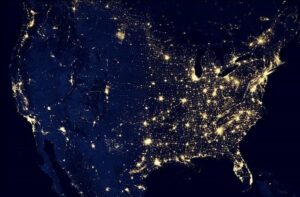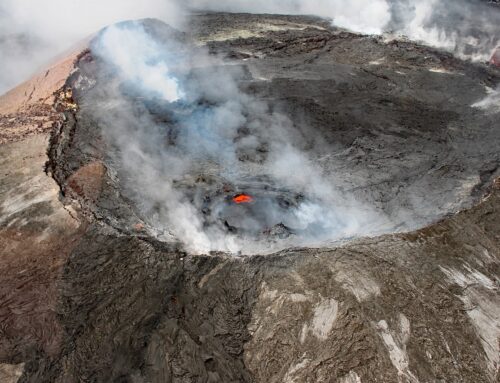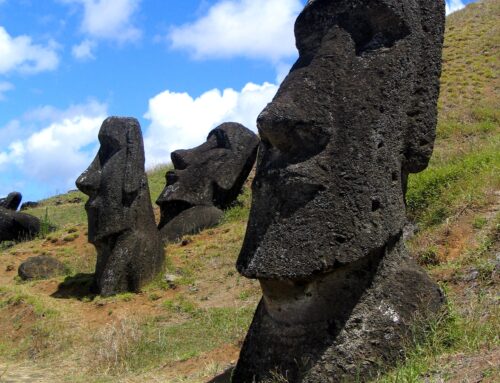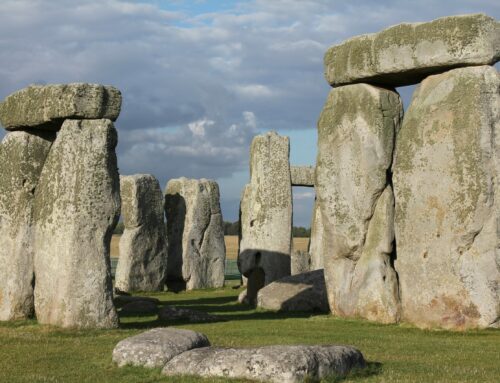Recent news about the $1 billion that Bill Gates is investing to build a new type of nuclear power plant is exciting. The June 2024 groundbreaking ceremony for the plant took place in Kemmerer, Wyoming—a detail that also caught my attention, since I spent time around that small town decades ago while surveying a proposed pipeline route for significant fossils. Additionally, during my career as a geologist, my work included geologic hazard analyses for nuclear power plants and nuclear waste storage projects. Not surprisingly, I have strong opinions about the importance of nuclear power production.
Three infamous accidents gave nuclear power a bad reputation: the 1986 explosions at Chernobyl in Ukraine, the potential explosion and partial meltdown at Three Mile Island in 1979, and the explosions and radiation release at Fukushima Daiichi in 2011. Faulty designs and operator errors contributed to these accidents. And times have changed.
Over the decades since nuclear power plants first came on-line in the 1950s, and with the knowledge gained from accident investigations, engineers have developed many technological advances. These include simpler nuclear power plan designs that are based on different concepts, different core designs, and coolants other than water—with a result of nuclear facilities that will be safer, more efficient, and less expensive than large, conventional water-cooled reactors. Nuclear power is a sustainable energy source with reactor operations that are free of carbon dioxide emissions (although other stages of the fuel chain, including uranium mining, depend on fossil fuels) and it can provide power around the clock to supplement time-restricted solar and wind generated power sources.
Reducing the massive amounts of carbon dioxide being pumped into the atmosphere and heating our planet will rely in part by making clean energy competitive with fossil fuels. The demand for electricity is surging worldwide—from data centers, industrial operations, electric vehicles, and many other sources—and smaller, simpler and safer nuclear power reactors can help to meet this challenge.

Nightime view of the United States (NASA, 2012)
The TerraPower Natrium Project
The energy company TerraPower submitted a construction application for the Natrium reactor to the Nuclear Regulatory Commission (NRC) in late March 2024. Bill Gates currently chairs, and co-founded, TerraPower as a way for the private sector to advance nuclear science. The NRC will probably take two to three years to review the license application and the owners do not expect the plant to be on-line until 2030 at the earliest.
Natrium would be a demonstration project with a molten salt energy storage system—sodium mixed with potassium, which has a lower melting point, absorbs more heat, and has a much higher boiling point than water. The reactor will not be pressurized and will operate at temperatures around 660 degrees F (350 C). Site design places the steam turbine and salt tank operations outside of the nuclear control area—a safer approach that will also reduce costs.
The site is adjacent to PacifiCorp’s Naughton Power Plant, which is scheduled to stop burning coal in 2026 and natural gas a decade later. (Warren Buffet’s Berkshire Hathaway is the majority owner of PacifiCorp, a regulated utility and a partner in the Natrium project.) Site preparation and construction of non-nuclear components are underway in steps that will allow the reactor to be built as quickly as possible if there is permit approval. Carbon-free power will be available when the reactor is constructed, the coal plant’s transmission lines can be reused, and its workers can be retrained. The output of the Natrium system will be equivalent to the energy required to power around 400,000 homes.
TerraPower plans the construction of Natrium through a partnership with the US Department of Energy in a program that authorizes up to $2 billion in a 50/50 cost share. Bill Gates has already provided $1 billion for the project and expects to increase that amount. There will be first-of-a-kind costs for designing and licensing the reactor, as well as supporting fuel fabrication and sodium testing facilities prior to operating the plant. Similar plants built in the future should cost significantly less.

Nighttime view of the Dallas-Fort Worth, Texas, metropolitan area (NASA, 2013)
The Power of Nuclear Reactions
Wikipedia has a wealth of information available on nuclear power, including pages about next-generation nuclear reactors, the Nuclear power debate, and even a Pro-nuclear movement page. The latter text begins diplomatically with the statement “There are large variations in people’s understanding of the issues surrounding nuclear power, including the technology itself, climate change mitigation, and energy security.” An excellent statement, I think, since increased understanding of these issues can and should turn the tide of negative public opinion about nuclear power.
Tackling the climate crisis that our world faces requires the efficient and effective use of many strategies. Nuclear power can play a valuable role in supplying the vastly increasing electric power generation capacity needed. Comparisons of the safest and cleanest sources of energy show that nuclear is second only to solar in lower death rates from accidents and air pollution and also in smaller greenhouse gas emissions. Coal and oil are on the opposite end of this spectrum. Exact numbers will vary depending on inputs, but in a fascinating chart here, developed by OurWorldinData.org, the greenhouse emissions of coal are an astounding 273 times higher than nuclear energy, and the deaths from accidents and air pollution associated with oil is 613 times higher than nuclear energy. Clearly, renewable energy sources and nuclear power are orders of magnitude safer and cleaner than fossil fuels.
Many of the nuclear power plants currently operating in the United States are slated for retirement in the next decade. Replacing the capacity that is lost could be difficult. Some assume that substituting wind and solar power will fill this gap. However, to store such variably available power on the grid, current battery technology may be inadequate and will need significant improvement.
TerraPower’s Natrium reactor faces daunting obstacles for design and licensing approval from the NRC, as well as probable construction delays and cost overruns. Other challenges include producing enough of the specialized fuel required and the long-term storage of nuclear waste. But I strongly believe, along with many others, that the project is an important fresh approach that is absolutely needed. Continued reliance on less expensive fossil fuels—and negative public opinion—hinders the development of nuclear power. Is this the wisest course for our society to be taking? Not in my opinion.

Nighttime view of Salt Lake City, Utah (NASA, 2013)
If you liked this post, please share it and/or leave a comment or question below and I will reply – thanks! And if you’d like to receive a message when I publish a new post, scroll down to the bottom of this page, and leave your email address on my website. Join now to learn more about geology, geography, culture, and history.






Chernobyl was on 26 April, 1986 not in 1968, which is an obvious typing mistake. (I was pretty close in Hungary to the fallout.)
Thank you for your post about the importance of nuclear power generation. In Hungary the only nuclear power plant in Paks along the Danube river is being extended by two new 1200 MW reactor blocks next to the existing 4 blocks to relieve Hungary from the need of importing electric power.
Thank you, István. I appreciate your catching my typo — yikes! And interesting about the situation in Hungary. Some European countries, especially, are definitely in a bind regarding energy security.